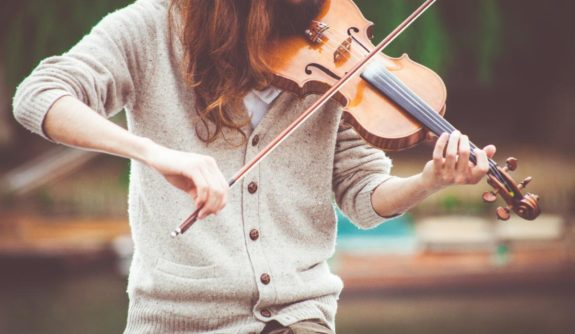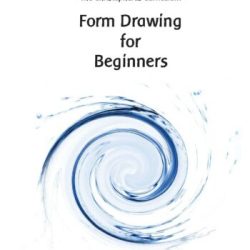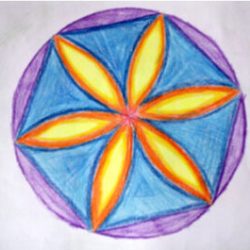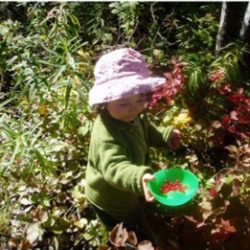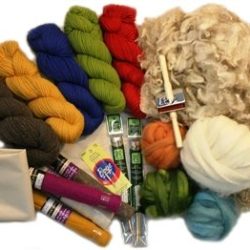Learning a Musical Instrument
 Overview of the Christopherus Music Curriculum
Overview of the Christopherus Music Curriculum
First Grade
Second Grade
Third Grade
Fourth Grade
Fifth Grade
Sixth Grade
Recorder or Pentatonic Flute?
In most Waldorf schools these days, children do not learn recorder on a regular descant/soprano recorder. Instead, they play on a beautiful instrument called the pentatonic flute. There are several reasons for this.
- It is harder to make an awful sound on the pentatonic flute
- The pentatonic scale is felt to be developmentally appropriate for young children
- The holes are more closely spaced and thus the instrument is easier to play
On the downside:
- Pentatonic flutes are expensive
- There is a narrower range of familiar tunes which can be played as one can only play music which is in the pentatonic scale
- Some people (myself included) do not like the breathy, windy sound produced by the instrument.
And the recorder? Well, for children with very small hands it might prove tricky to play. Other than that, though, I feel the recorder is a more versatile instrument and some parents might like the fact that one can buy an instrument for less than $15! On that note, I am told that unless one wants to spend a lot of money on a really good wooden recorder, it is better to buy a fairly cheap Suzuki plastic recorder than a cheap wooden recorder. Most music stores sell them.
I used to be fairly on-the-fence with this issue, tending, as always to be pragmatic and to suggest that parents go with what is most comfortable for them and what will actually work. Whilst still valuing the importance of “any recorder is better than no recorder”, I also need to say that over the years I have learned a great deal more about the difference between the pentatonic flute and the soprano recorder. A friend who is a therapeutic eurythmist (a form of healing movement created by Marie and Rudolf Steiner and which is practiced in all fully-staffed Waldorf schools) told me that really, these instruments are not on a par with one another. The way the child has to form his mouth and tongue to play the pentatonic flute; the way he breathes and, in particular, the way the palate is massaged by the vibrations of sound, are highly beneficial for neurological development. This is something to think deeply about. Here we can see that it is not just the audible tone or sound that carries a healing impulse, but the very vibrations of that sound have therapeutic value. For any child that has sensory or other “issues” this might just be what tips one’s decision one away or the other.
So… you need to decide what you want to do. We certainly feel that one of the great things about playing the recorder at home is that everyone can learn and that eventually, if one family member plays the alto or tenor recorder, together you can play some very beautiful music, even if there are only two or three of you at home! As group music experiences can be hard to come by for homeschoolers, this is something important to consider.
Whatever you decide, to play a simple wind instrument such as a recorder or pentatonic flute is an extremely important experience for a child. It strengthens and develops the breathing and rhythmic elements of the child’s body and, especially if there is a weakness there with allergies or asthma, can enhance the health. With such instruments, the child also experiences being the beautiful music that pours out of him and, lastly, your child develops his capacity to listen, something crucial to future success both in terms of education and of being a peaceful and centered person!
By the way, it is worth mentioning that in second grade we recommend that the parent learns and play the lyre with their child. And in third grade, as in all Waldorf schools, we advise that children pick up a third (or second) instrument such as the violin. We do not recommend that one give very young children music lessons though we know that some of you will have started this already. Please refer to information about the Christopherus curriculum on our website for further discussion on music lessons and choosing an instrument for children.
(reprinted from our First Grade Syllabus)
Lyre

The tone quality of the lyre in its newly created form is essentially different from that of other instruments of recent centuries. These other instruments seem to say, “Listen to me!” From the lyre we hear, “Listen, not to me, but beyond my sound.” It does not impose itself upon us but invites us to participate in the supersensible aspect of its sounding. When the lyre creates or “frees” a tone, we may ignore it or listen to it in a passive way, allowing it to wash over us, soothing us. We can also take up the tone’s call to become free with it, actively listening with the ear of our heart, going with and beyond what we have heard with our physical ears.
While the lyre resembles a harp, it is played in a different way and produces a different tone. The harp is played by plucking the strings with the tips of curled fingers and produces a brilliant tone. The lyre is played by stroking the strings inward toward the heart with the pads of relatively straight fingers held vertically. Each finger stroke of a string comes to rest on the inner neighboring string, thereby producing a lighter and more mellow tone.
Anyone Can Play a Harp the First Time
by Raphael Weisman www.harpsoflorien.com
A player at any level of skill can draw soothing music from a harp. It may seem daunting to imagine yourself playing a harp. But it really isn’t such an impossible task. To ease you into that possibility, let me share some perspectives with you. Learning to play the harp is like painting by numbers. You will get there by the end of this article.
When you think of a harp, the image in most people’s mind is the grand, gilded harp of the symphony orchestra. So it used to be. The popularity of Celtic music, and relaxing harp music, now widely available in recorded form, is replacing that image with ones much closer to the real ancestors of this beautiful instrument. Harps and lyres shown on coins, carvings, inscriptions and manuscripts are of the smaller, common, garden–variety harp.
The folk harp is part of virtually every culture. David soothed the anguished soul of King Saul in the Bible. The Bards of ancient Europe played the Celtic harp. They plucked and sang their story songs in the castles of kings and nobles, and played for their supper in the village inn. The harp was played in ancient Egypt, Mesopotamia, Africa, Greece and Rome, too.
Legend reports that Apollo made the first harp/lyre from the dry carcass of a tortoise with a string of sinew still stretched across it. The guitar is named and descended from the Ancient Greek Kithara, a lyre. The lyre and the harp are brother and sister, the terms often used interchangeably. The difference between them is 90 degrees, the way the strings are placed relative to the sounding board.
Today, because harps are being mass–produced abroad, more people have access to one (as with the guitar in the 1960’s). Locally manufactured handmade harps are also gaining in popularity, as more people take up playing the harp. Societies and festivals abound.
Small harps build musical confidence for children and beginners
The Kinder Lyre, often called the Kinder Harp, is our simplest, most basic harp. It is being played to and by countless children and adults alike—from before birth, through infancy and childhood—all the way through to the last breath.
There are no “wrong” notes on the Kinder Lyre. All the notes of the scale harmonize, so when any two or more are played together, they always sound pleasing. It is tuned to a Pentatonic or 5–note scale (DEGABde), a scale used extensively in folk music from around the world. That scale has a very soothing and relaxing sound, a very “Oriental” sound.
In Waldorf Education, a system founded by Rudolf Steiner, who explored and taught about the spiritual effects of this scale on the young child, the Kinder Lyre is introduced in the 1st grade. Often schools will buy the instruments as unfinished kits and complete them as a project. Many homeschooling families use the Kinder Lyre. Some make them from kits because they are so easy to learn and play.
Many familiar folk songs are in this scale, like Old Lang’s Syne and Amazing Grace. The Kinder Lyre I build comes with a songbook called Familiar Pentatonic Songs, which includes these and many others you grew up with. The songbook also teaches how to read music—an easy entry into the sometimes scary world of a new language like music (if you are a total beginner). But you don’t even need to rely on the songbook or any lessons to call forth beautiful tones, from your first note.
Since adults want a louder instrument than the Kinder Lyre, the Little Minstrel Harp is the alternative learning instrument (and relaxation agent) for those not yet ready for the larger folk harps (with their 8 note scale). Both the Kinder Lyre and the Little Minstrel encourage improvisation, so almost any plucking, stroking and strumming sounds pleasant. And combinations of all three are possible.
The Little Minstrel is a favorite with teachers, story tellers and older people who always wanted to play an instrument—but never could get around to it. Many people have told me they were drawn to the harp as a child, or they played piano as a child, but haven’t played an instrument since. The Little Minstrel is used in hospitals and schools around the country to help bring harmony into the lives of children and the elderly. This is really Harp Therapy at its most fundamental level, for both player and listener.
And so to the Harp! In the early days of the “folk harp revival,” there were few teachers, so Sylvia Woods wrote a book called Teach Yourself to Play the Folk Harp. She offers good introductory material and a system of playing using numbers for fingers. You learn to read music step by step. And by the end of your first lesson you’ve already played five familiar songs!. Many of my harp customers are now playing harp in hospitals and hospice, and started out with these first steps. You can too!
In creating our 2nd Grade Curriculum we are partnering with Raphael Weisman of Harps of Lorien to provide a reliable, high quality and affordable source of pentatonic lyres. Raphael has kindly written the following article for us:
Kinder Harp/Kinder Lyre – Choosing the Right Instrument
by Raphael Weisman. www.harpsoflorien.com
I have been making the Kinder Lyre now for over 20 years. This kind of lyre was, and is still, called a Kinder Harp quite widely in Waldorf circles. I trained in building early fretted instruments, such as the lute and Baroque guitar before moving to the lyre and then the harp. In that world of rediscovering Early Music and its instruments, it was important to be precise in one’s terminology of instruments. So I renamed the Kinder Harp the Kinder Lyre. Which begs the question, what is the difference between a lyre and a harp?
A lyre’s strings run parallel to the sounding board with a transference or contact point between them, which is usually called the bridge of the instrument. Often there is another place where the string vibration is transferred to the instrument, like a nut on a guitar or violin or the bridges on the piano soundboard over which the strings stretch. The image that comes to mind is the depiction of Apollo, the Greek God of Music, playing his tortoise body instrument with the two curved arms coming out of it and the strings attached to a crossbar between them.
On the harp, the strings protrude out of the soundbox at an angle of 90 degrees along the center line, and stretch towards an arm on which the tuning pegs are attached for tightening the strings. Structurally, this is the main difference between a lyre and a harp. The harp is also usually much larger than the lyre and has a greater volume because of its larger resonating chamber.
A different kind of sound is produced by each of the above. The harp is strung with metal strings and nylon or gut strings, or some combination, whereas a lyre is almost always strung with metal strings, because the size and string length is smaller and metal strings are usually required to produce an adequate volume of sound.
The lyre is often tuned to a five-note or pentatonic scale, whereas the harp is tuned to the diatonic (seven note, do – re – me…) scale we are familiar with as represented by the white notes of the piano. The harp also usually has levers or pedals that allow you to play the additional sharps or flats found on the piano keyboard, the black notes as well as the white. The pentatonic lyre is configured with the same relationship of notes as the black keys on the piano.
If you are a homeschooling parent and are looking for an instrument to play with your child, the pentatonic lyre would be the most likely candidate because it is simpler, quieter and cheaper and ideally suited to the tender sensibilities of a child. It can be played enjoyably without needing lessons and practice. If you are drawn to play the harp, whether for your child or you (or both), you are engaging in a more serious commitment to lessons and practice and a different level of music making. Small non-pedal or lever harps are available quite widely today. Today harp teachers can be found widely all around the world who can get you started and there are many self-learning resources available to help you on the world wide web.
Whatever instrument you are drawn to, it is better to get a good quality instrument that carries a higher vibration so that the resonance you are working with enhances your life. There are many instruments mass produced abroad with inferior materials and no resonant quality that are very inexpensive. I would say that buying your instrument from a local maker would be the most satisfying.
Harps of Lorien produces both Kinder Lyres and Folk Harps of different sizes and levels. The instruments are of the highest quality, produced in the USA of indigenous woods like cherry and walnut and the prices are affordable.
Instruments from Europe are often of high quality but are more expensive because of the transportation costs and the higher cost of living in Europe. Returning an instrument you are not satisfied with also becomes an issue when ordering from abroad.
I always recommend having a case for the instrument and make sure the pins that tighten the strings are tightly fitted so the instrument stays in tune. If you have any questions or want information on further resources, email me at Raphael (at) harpsoflorien.com. Enjoy your music making!
Other Musical Instruments
 We feature this article by my friend Sarah Baldwin because I think she raises a lot of interesting points for parents to consider when thinking about music lessons for their children. I want to add a few things, though. One is that while I certainly see why Sarah feels that “slightly younger is better” in terms of music instruction for children, I do think that since most Waldorf homeschooled children will be learning the recorder from first grade, that 8 1/2 or 9 remains the optimal age for taking up the first “serious” instrument complete with formal (ie not Mom) instruction. Again, if you work with our Christopherus recommendations, your child will also play the lyre in second grade and will have ample opportunity to develop sensitivity to tone, harmony, rhythm and a general “feel” for music. I think that Sarah’s concern about a window of opportunity for music instruction is valid – but in our case, it has not been lost because the child is immersed in music and has been for several years. Another issue here is that at 9, a child is ready for more interaction with the world, no longer learns primarily via imitation and is generally better able to cope with the necessary demands of serious music instruction.
We feature this article by my friend Sarah Baldwin because I think she raises a lot of interesting points for parents to consider when thinking about music lessons for their children. I want to add a few things, though. One is that while I certainly see why Sarah feels that “slightly younger is better” in terms of music instruction for children, I do think that since most Waldorf homeschooled children will be learning the recorder from first grade, that 8 1/2 or 9 remains the optimal age for taking up the first “serious” instrument complete with formal (ie not Mom) instruction. Again, if you work with our Christopherus recommendations, your child will also play the lyre in second grade and will have ample opportunity to develop sensitivity to tone, harmony, rhythm and a general “feel” for music. I think that Sarah’s concern about a window of opportunity for music instruction is valid – but in our case, it has not been lost because the child is immersed in music and has been for several years. Another issue here is that at 9, a child is ready for more interaction with the world, no longer learns primarily via imitation and is generally better able to cope with the necessary demands of serious music instruction.I also want to add a gentle warning to her praise of Suzuki teachers. My research confirms what Sarah says in terms of how Suzuki teachers approach music instruction and I too feel that this is critical. However, I also know that far too many Suzuki music teachers have a strong competitive streak in their form of teaching which can be overpowering and can make outrageous demands in terms of how much the child should practice every day. Some also want the child to listen to recorded music for hours at a time. So… look for Suzuki, but in the end it is the teacher himself or herself, as a human being, who needs to be considered, not just their method of instruction. I recommend that if you find the right person who clicks with your child, then that is who you should go with regardless of what method s/he uses. By waiting until third grade to seek an outside teacher, one also can feel okay about overlooking the fact that the chosen teacher teaches notation straight away as well (though perhaps you could persuade her to work without notation for the first few months!).
— Donna
When Should My Child Begin Music Lessons?
A Comparison of Waldorf and Suzuki Philosophies
by Sarah Baldwin, M.S.Ed., Bella Luna Toys
I have frequently been asked by parents for advice on when to begin formal music lessons with their children. I have done a lot of research on this very question, and have also observed the musical development of my own children (currently ages 10 and 13) who have both been studying instrumental music for a number of years. My 13-year-old has been playing piano since he was eight, and my 10-year-old started cello at the age of seven.
I am a trained Waldorf teacher and a strong proponent of Suzuki music education. I have also a trained Music Together teacher (a music and movement program for preschoolers and their parents). I have wanted to do formal research comparing Suzuki and Waldorf pedagogy ever since discovering the many similarities in approach.
In spite of the many similarities in approach, there is one fundamental difference between Waldorf and Suzuki philosophy regarding the age at which a child should begin formal music lessons. Suzuki students are encouraged to begin instrumental lessons as early as age two or three. My personal conclusion has been that seven seems to be a more appropriate age for most children to begin private music lessons, for all the reasons that, according to Waldorf philosophy, makes seven the ideal age for a child to begin formal, academic learning at school.
In Waldorf thought, after a period of intense growth during the first seven years of life, the age of seven is typically when the child’s etheric forces are newly freed up for more academic learning. The child of this age would thus be better able to focus on music lessons, and to sit still long enough to for a lesson and to practice. I have questioned many, many music teachers – Suzuki teachers, traditional music teachers and Waldorf music teachers — on whether there is a great advantage to starting children on an instrument as early as 3-5 years old and, by and large, most teachers I’ve talked to seem to agree that children who start when they are older are not at a disadvantage; they are usually able to catch up quickly with the children who have been taking lessons since they were much younger.
Within a few months of starting cello, I observed that my seven-year-old caught up to the same place as another seven-year-old boy in his class who’d been playing for a full two years. My child, I would say, has average musical ability. He is musical, but certainly not precocious musically.
I think it is very unnatural for a child under seven to be asked to sit down and practice an instrument daily, no matter how short or playful the practice session. Children under seven should be moving and playing, without any pressure or the stress of practicing, or worse, performing. They are learning an enormous amount, taking in the world through their senses, developing their imaginations through play, and experiencing life.
On the other hand, most Waldorf schools don’t start teaching strings until 3rd or 4th grade. I think this may be a little late. Recent brain research indicates that there is a musical learning “window” of opportunity that closes around the age of nine (similar to the “window” for language acquisition). Based upon my personal research and observation, I believe that it is more difficult, though certainly not impossible, for most children to learn an instrument if they start after the age of nine. Waldorf students are, of course, learning to play the pentatonic flute, and often the soprano recorder, before the age of nine, which is undoubtedly beneficial and helps to develop their musical ear. There are many anthroposophists and Waldorf teachers who would argue that learning to play a stringed instruments or the piano would be inappropriate for children under nine. However, my personal experience with my own children has been entirely rewarding and positive, having started them with music lessons at ages 7 and 8.
I would also recommend waiting until a child begins to show an interest in learning to play an instrument before offering private music instruction. They are much more likely to be self-motivated when there is a genuine interest. I have observed very few children express an enthusiastic interest in learning to play an instrument before the age of 5-7. Of course, there are some children who really are musically precocious and may, in fact, prove to be prodigious musical students. If your child is relentless in demanding to learn a particular instrument, I would advise listening to them and taking advantage of his interest. If your child is under seven, though, I would highly recommend (in fact I would BEG you) to look for a Suzuki teacher. A good Suzuki teacher, like a good Waldorf, teacher, teaches out of imitation and in a playful, imaginative way. The emphasis should be on the process, not on the product.
Another similarity between Suzuki method and Waldorf education is that children are taught to play beautiful music by memory and ear before they are able to read music — just the way Waldorf students are able
to recite beautiful poetry by heart before they are able to read or write. Learning to play music precedes learning to read music, just as in human development learning to speak always precedes learning to read
and write. Learning to read music should not be attempted before the child is able to read language.
Furthermore, readers of Dr. Suzuki’s book Nurtured by Love, will come across a lot of philosophy that is very similar to Rudolf Steiner’s. (It is interesting to note that they both lived in Germany at the same
time.) Dr. Suzuki emphasizes that it is far more important for a child to strive to become a beautiful person, than the most technically proficient musician. By nurturing beautiful feelings in the child, beautiful music will be produced.
I believe the most important thing one can do musically for a child under seven is to expose them to lots and lots music, especially the human voice. Sing to them and with them all the time! Sing even if you think you can’t — your child will not be critical, and will appreciate your effort more than you can imagine. I think it’s also of great benefit to let children hear live music being played so that they learn that music is something that human beings make, and are not just mechanical sounds that come out of an electronic box. Research indicates that that listening to music (and lots of different kinds of music) early in life is what develops a child’s musical ear. So that even if a child doesn’t begin formal music instruction until age nine or later, by having been exposed to many types of music and different qualities of tone, that child will still have developed musically during her early childhood.
© Sarah Baldwin, M.S.Ed., 2005
Waldorf Early Childhood Education
Sarah Baldwin, former homeschooler and mother of two, former kindergarten teacher at the Ashwood Waldorf School in Maine, and now proprietor of Bella Luna Toys.
References:
Lili M. Levinowitz, “The Importance of Music in Early Childhood.”
http://www.musictogether.com/HTML%20Pages/aboutus.html
For more information on Suzuki music instruction, visit
http://www.suzukiassociation.org/

